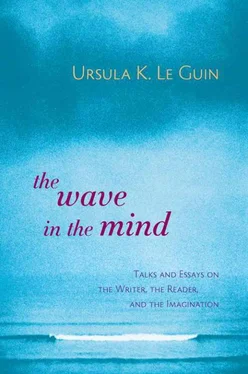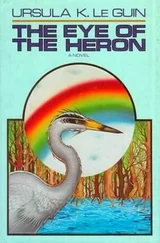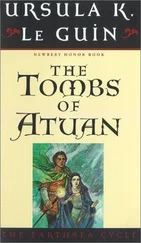What is the rhythm the silent reader hears? What is the rhythm the prose writer follows?
While she was writing her last novel, Pointz Hall , which she refers to below as PH, and which when it was published became Between the Acts , Virginia Woolf wrote in her diary:
It is the rhythm of a book that, by running in the head, winds one into a ball: and so jades one. The rhythm of PH (the last chapter) became so obsessive that I heard it, perhaps used it, in every sentence I spoke. By reading the notes for memoirs I broke this up. The rhythm of the notes is far freer and looser. Two days of writing in that rhythm has completely refreshed me. So I go back to PH tomorrow. This I think is rather profound. (Virginia Woolf, Diary , 17 November 1940)
Fourteen years before this diary notation made near the end of her life, Woolf wrote the passage I used to open this book and for its title, where she speaks of prose rhythm and the wave that “breaks and tumbles in the mind.” In it she also, lightly, called her remarks on the rhythm of narrative “profound.” In both these passing notes on the rhythm of narrative, she knew, I think, that she was onto something big. I only wish she’d gone on with it.
In a letter in 1926, Woolf said that what you start with, in writing a novel, “is a world. Then, when one has imagined this world, suddenly people come in.” (Letter 1618) First comes the place, the situation, then the characters arrive with the plot…. But telling the story is a matter of getting the beat—of becoming the rhythm, as the dancer becomes the dance.
And reading is the same process, only far easier, not jading: because instead of having to discover the rhythm beat by beat, you can let yourself follow it, be taken over by it, you can let the dance dance you.
What is this rhythm Woolf talks about? Prose scrupulously avoids any clear regular beat or recurrent cadence. Are there, then, deeply syncopated patterns of stress? Or does the rhythm occur in and among the sentences—in the syntax, linkage, paragraphing? Is that why punctuation is so important to prose (whereas it often matters little in poetry, where the line replaces it)? Or is prose narrative rhythm established as well in even longer phrases and larger structures, in the occurrence of events and recurrence of themes in the story, the linkage and counterpoint of plot and chapter?
All these, I think. There are a whole lot of rhythms going in a well-written novel. Together, in their counterpoint and syncopation and union, they make the rhythm of that novel, which is unlike any other, as the rhythms of a human body in their interplay make up a rhythm unique to that body, that person.
Having made this vast, rash statement, I thought I should try to see if it worked. I felt I should be scientific. I should do an experiment.
It is not very rash to say that in a sentence by Jane Austen there is a balanced rhythm characteristic of all good eighteenth-century narrative prose, and also a beat, a timing, characteristic of Jane Austen’s prose. Following what Woolf said about the rhythm of Pointz Hall , might one also find a delicate nuancing of the beat that is characteristic of that particular Jane Austen novel?
I took down my Complete Austen and, as in the sortes Vergilianae or a lazy consultation of the I Ching , I let the book open where it wanted. First in Pride and Prejudice , and copied out the first paragraph my eyes fell on. Then again in Persuasion .
From Pride and Prejudice:
More than once did Elizabeth in her ramble within the Park, unexpectedly meet Mr Darcy.—She felt all the perverseness of the mischance that should bring him where no one else was brought: and to prevent its ever happening again, took care to inform him at first, that it was a favourite haunt of hers.—How it could occur a second time therefore was very odd!—Yet it did, and even a third.
From Persuasion:
To hear them talking so much of Captain Wentworth, repeating his name so often, puzzling over past years, and at last ascertaining that it might , that it probably would , turn out to be the very same Captain Wentworth whom they recollected meeting, once or twice, after their coming back from Clifton:—a very fine young man: but they could not say whether it was seven or eight years ago,—was a new sort of trial to Anne’s nerves. She found, however, that it was one to which she must enure herself.
Probably I’m fooling myself, but I was quite amazed at the result of this tiny test.
Pride and Prejudice is a brilliant comedy of youthful passions, while Persuasion is a quiet story about a misunderstanding that ruins a life and is set right only when it’s almost too late. One book is April, you might say, and the other November.
Well, the four sentences from Pride and Prejudice , separated rather dramatically by a period and a dash in each case, with a colon breaking the longest one in two, are all quite short, with a highly varied, rising rhythm, a kind of dancing gait, like a well-bred young horse longing to break out into a gallop. All are entirely from young Elizabeth’s point of view, in her own mental voice, which on this evidence is lively, ironical, and naive.
Though the paragraph from Persuasion is longer, it is in only two sentences; the long first one is full of hesitations and repetitions, marked by eight commas, two colons, and two dashes. Its abstract subject (“to hear them”) is separated from its verb (“was”) by several lines, all having to do with other people’s thoughts and notions. The protagonist of the sentence, Anne, is mentioned only in the next-to-last word. The sentence that follows, wholly in her own mental voice, has a brief, strong, quiet cadence.
I do not offer this little analysis and comparison as proof that any paragraph from Pride and Prejudice would have a different rhythm from any sentence in Persuasion; but as I said, it surprised me—the rhythms were in fact so different, and each was so very characteristic of the mood of the book and the nature of the central character.
But of course I am already persuaded that Woolf was right, that every novel has its characteristic rhythm. And that if the writer hasn’t listened for that rhythm and followed it, the sentences will be lame, the characters will be puppets, the story will be false. And that if the writer can hold to that rhythm, the book will have some beauty.
What the writer has to do is listen for that beat, hear it, keep to it, not let anything interfere with it. Then the reader will hear it too, and be carried by it.
A note on rhythms that I was aware of in writing two of my books:
Writing the fantasy novel Tehanu , I thought of the work as riding the dragon. In the first place, the story demanded that I be outdoors while writing it—which was lovely in Oregon in July, but inconvenient in November. Cold knees, wet notebook. And the story came not steadily, but in flights—durations of intense perception, sometimes tranquil and lyrical, sometimes frightening—which most often occurred while I was waking, early in the morning. There I would lie and ride the dragon. Then I had to get up, and go sit outdoors, and try to catch that flight in words. If I could hold to the rhythm of the dragon’s flight, the very large, long wingbeat, then the story told itself, and the people breathed. When I lost the beat, I fell off, and had to wait around on the ground until the dragon picked me up again.
Читать дальше




